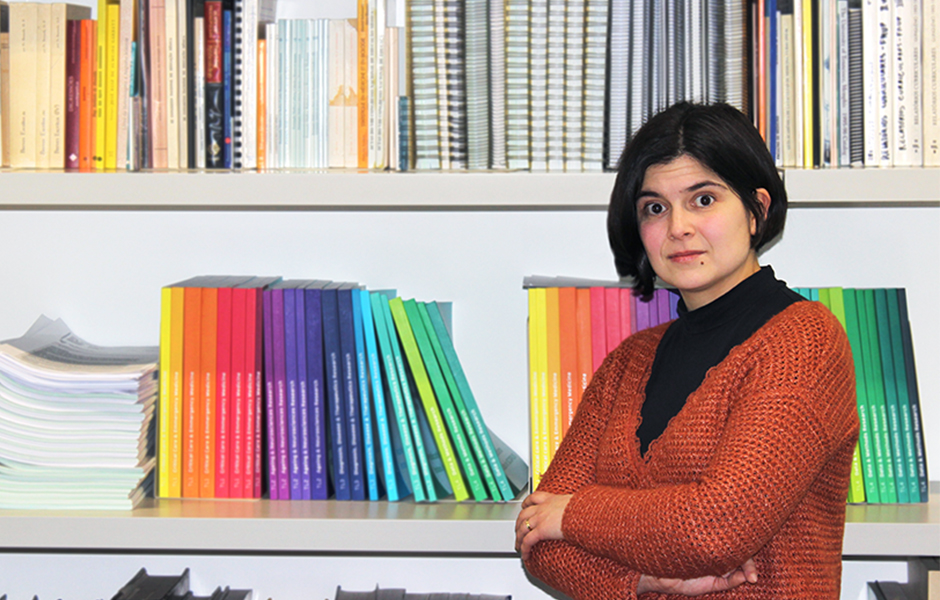A group of researchers from CINTESIS – Center for Health Technology and Services Research is developing a 3D tool aiming to make an important contribution to conservative breast cancer surgery.
The research is in the hands of Inês Moreira and Pedro Pereira Rodrigues, from CINTESIS, joined by Bruno Oliveira, a specialist in Computer Graphics, aiming to create a biomechanical model of the breast, based on mammography, that will have the ability to guide surgeons in the operating room.
“The goal is to help surgeons optimize conservative breast cancer surgery, allowing for greater precision and safety,” explains Inês Moreira, who is completing her doctorate at the PDICSS – Doctoral Program in Clinical Research and Health Services of the Faculty of the University of Porto (FMUP), with the project “Development and assessment of a new tool to aid preoperative localization of nonpalpable breast lesions: a 3D mammogram”, supervised by Pedro Pereira Rodrigues, responsible for the Thematic Line “Health Data and Decision Sciences & Information Technologies” (TL3), of CINTESIS, and by Isabel Ramos and José Luís Fougo, professors at FMUP.
According to the CINTESIS researcher, who is also a radiology technician at the Breast Center of the Hospital Center of São João (CHS) in Porto, and a lecturer at the Polytechnic School of Porto, this tool will allow to obtain 3D images of the breast directly from mammography, something that is only currently possible with MRI, a longer and more expensive examination.
“Mammography is an x-ray with two incidences, that is, with two views of the breast, through X-ray. The objective is to create with these two views a three-dimensional image to make it easier for the surgeon to have a surgical approach,” she says.
After being consulted on this subject, the surgeons and radiologists of the CHSJ Breast Center considered as essential in the construction of the new tool the determination of the surgical margins. “In conservative surgeries, where only the tumor is removed, it is very important to evaluate the safety margins. If this margin is less than 10 mm, the tumor can continue in the breast and the patient may have to return to the operating room for a new surgical intervention,” says Inês Moreira.
Likewise, they defend the need to obtain a 3D image of the breast with the patient in the position of dorsal decubitus (lying on the back), since it is in this position that the surgery takes place. “Currently, the mammogram is done with the person standing and with the breast contracted. It is a challenge to make a three-dimensional image from a two-dimensional image and in which the breast is compressed,” says the researcher.
The advantages of the new tool are obvious: “For women, it will allow them to preserve the breast as much as possible and decrease the number of reoperations. For hospitals that cannot perform mammographic MRI and also have breast surgery, it will be possible to take 3D images from mammography, without the need to refer the patient to another hospital.”
After the development of the biomechanical model, there will be a validation phase and a study that will include women undergoing breast cancer surgery. The introduction into clinical practice may occur as early as 2019.
The work of Inês Moreira and Pedro Rodrigues is raising the curiosity of the scientific community. From April 24 to 26, the CINTESIS researcher will be at the Medical Informatics Europe (MIE 2018), in Sweden, organized by the Swedish Association of Medical Informatics (SFMI) and the European Federation for Medical Informatics (EFMI) with a poster presentation entitled “Need and outcomes of a 3D breast image to aid conservative cancer surgery planning: results of a multidisciplinary focus group”.
Following a parallel and somehow pioneer work, Inês Moreira will be at the European Radiology Congress ECR 2018 (European Society of Radiology), which will be celebrated from February 28 to March 4, with an oral communication entitled “Learner’s perception, knowledge and behavior assessment within a breast imaging eLearning course for radiographers”, in which she will present the results of the two editions of the Course of Breast Radiology. The work, carried out within the scope of the Master in Medical Informatics (MIM) produced an article published in the Journal of Medical Internet Research (JMIR). In 2017, the course also received an honorable mention in the 3rd Edition of the Pedagogical Innovation in Distance Education Award (PIPED) promoted by the E-learning and Innovation Unit of the Polytechnic of Porto.
More than 250,000 mammograms are performed annually in Portugal (data from the DGS for 2014) and there are around 6,000 new cases of breast cancer, i.e. 11 new cases per day. Four women die daily from this disease.

